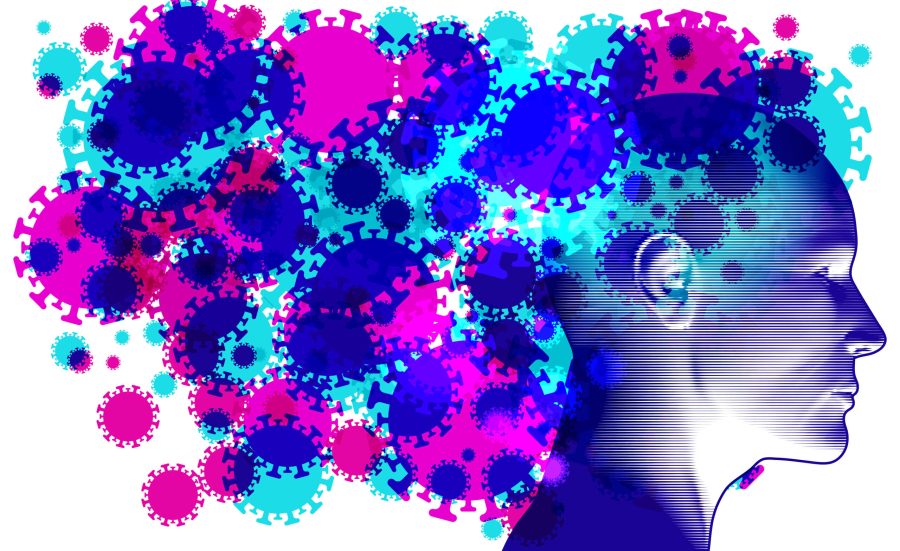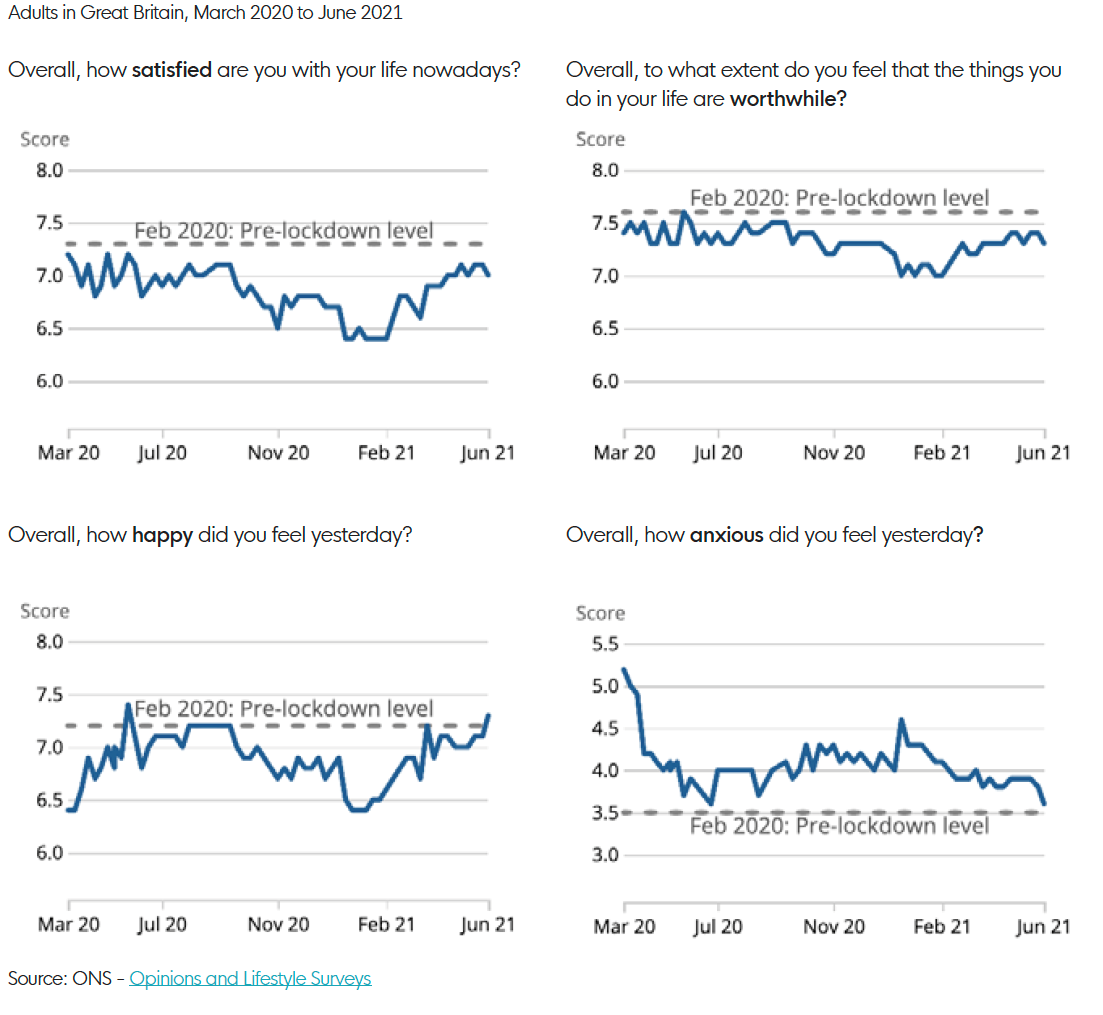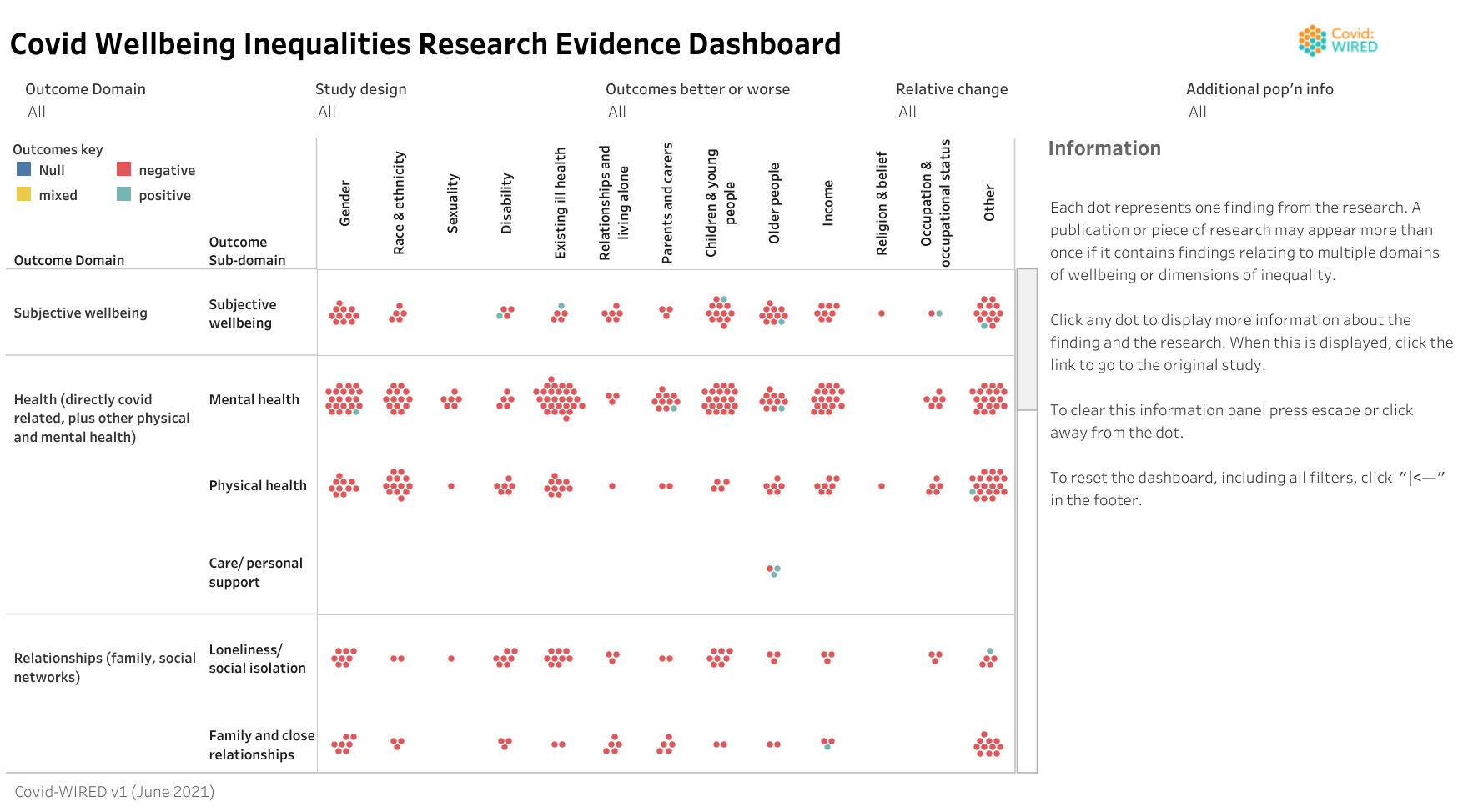Introducing Covid:WIRED, a new tool to help tackle the pandemic’s complex and unequal impacts on wellbeing

The What Works Centre for Wellbeing has created an interactive database of academic research and survey evidence to aid understanding of who has been hardest hit by COVID-19 and why – and in so doing, to encourage a wellbeing-centred recovery plan
Joanne Smithson
COVID-19 has affected all aspects of our lives, not least our mental health. Among adults in Great Britain, self-reported wellbeing metrics dropped significantly below pre-COVID levels during the pandemic (see ONS charts below). In seeking a full and inclusive recovery, it is therefore necessary to understand the full breadth of what drives people’s wellbeing and how these drivers interact with each other – in order to inform policies, capture the different needs of different communities in different parts of the UK, and ensure these policy responses represent value for public money.

People’s wellbeing has, of course, been affected by direct impacts of the pandemic such as illness and the loss of income or employment. We already know that unemployed people are typically unhappier, exhibiting a lower sense of purpose, lower life satisfaction and higher anxiety than their employed peers. But during 2020, the gap between the average wellbeing of unemployed and employed people increased compared with pre-pandemic levels. This may have been partly due to the particularly low wellbeing of people who became unemployed during this period, and partly due to the deterioration in wellbeing of those who were already unemployed.
In addition, the more intangible social and psychological impacts of COVID-19 – such as loneliness, anxiety and the loss of a sense of purpose – have also affected many people across the UK. Notable findings include:
- Women experienced a greater increase in anxiety compared with men during the pandemic. From April to September 2020, 27% of women in the UK reported suffering from high anxiety, compared with 20% of men.
- Those who felt most lonely prior to COVID-19 reported feeling even higher levels of loneliness during the pandemic. This increase began as physical distancing and lockdown measures were introduced in March 2020.
- Adults at most risk of being lonely (and increasingly so during the pandemic) have one or more of the following characteristics: they are young, live alone, have low incomes, are out of work and/or have a mental health condition.
A tool to support wellbeing-centred recovery
In order to support a wellbeing-centred recovery, the What Works Centre for Wellbeing has created a database containing academic research, surveys and evidence from many different sectors to build a picture of who has been affected by the pandemic, and how they have been affected.
This helps us understand how different impacts have been felt across the population – and in particular, how the key factors that drive people’s levels of individual wellbeing have been affected. The result is Covid:WIRED, our new Wellbeing Inequalities Research Evidence Dashboard.
Developed in partnership with the Centre for Thriving Places, Covid:WIRED is a unique online dashboard which looks at emerging research on the impact of the pandemic on different populations through different outcomes. Its starting point is subjective wellbeing and six of its drivers, namely:
- health;
- what we do;
- relationships;
- money;
- where we live; and
- education history.
The dashboard already contains more than 400 pieces of evidence that have been organised by subjective wellbeing and its drivers and by inequality dimension (see matrix below). The dashboard can be further filtered by study design, whether the wellbeing change is positive or negative, and whether existing wellbeing inequalities have widened or narrowed. By looking at these inequalities in wellbeing change, we are able to identify which societal groups have been hardest hit.

Addressing the unequal impacts of COVID-19 on wellbeing
Humans are resilient, and some COVID-related wellbeing changes will return to normal without making too much of an impact. But some won’t and will have longer-term effects on people’s lives – and it is important for policymakers to know where to direct policies that will help recovery in these areas.
Another key aim of the Covid:WIRED project was therefore to look for evidence that specifically examined where wellbeing impacts were uneven, in order to identify those individuals and groups who have been disproportionately affected by the pandemic.
In some cases, existing inequalities have been exacerbated; in other cases, new gaps and vulnerabilities have been exposed. Wellbeing inequalities rose between some groups but fell between others – highlighting the importance of taking a detailed and disaggregated look at how people are doing in the UK, and what is driving changes in subjective wellbeing.
New data is still coming in, but the evidence suggests that several groups have suffered ‘more than average’ from the pandemic in terms of their subjective wellbeing. These include:
- women;
- older people (at the start);
- younger people (later on);
- some ethnic minorities; and
- renters.
For those groups who were already disadvantaged (e.g. people from some ethnic minorities and renters) and where these impacts imply growing wellbeing inequalities, the data argues in favour of doubling-down on providing targeted support.
In other cases – for example, young people – the implications are more subtle. It would be valuable to understand why wellbeing has fallen more for some groups than others, and where the pandemic has introduced new vulnerabilities.
Informing the design of policies and programming
The Covid:WIRED database of studies identifies how different aspects of life have been affected, as well as which individuals have been most impacted. This evidence can be used to inform the design of policies and programming to take into account how some people may have been affected by multiple drivers of wellbeing all at once, and which existing wellbeing inequalities and vulnerabilities have been exacerbated.
A wellbeing approach to effective policy- and decision-making is about how decisions are made. Instead of prescribing one-size-fits-all policies, we know that agency and control matter for both individuals and communities. We hope our live database, which we intend to update with new research as it is collected, will be a valuable resource for policy and practitioner audiences alike, who are interested in understanding the unequal impacts of COVID-19 on different people’s wellbeing across a range of contexts.
Joanne Smithson is Head of Implementation and Learning, Local Government & Health Lead at the What Works Centre for Wellbeing
